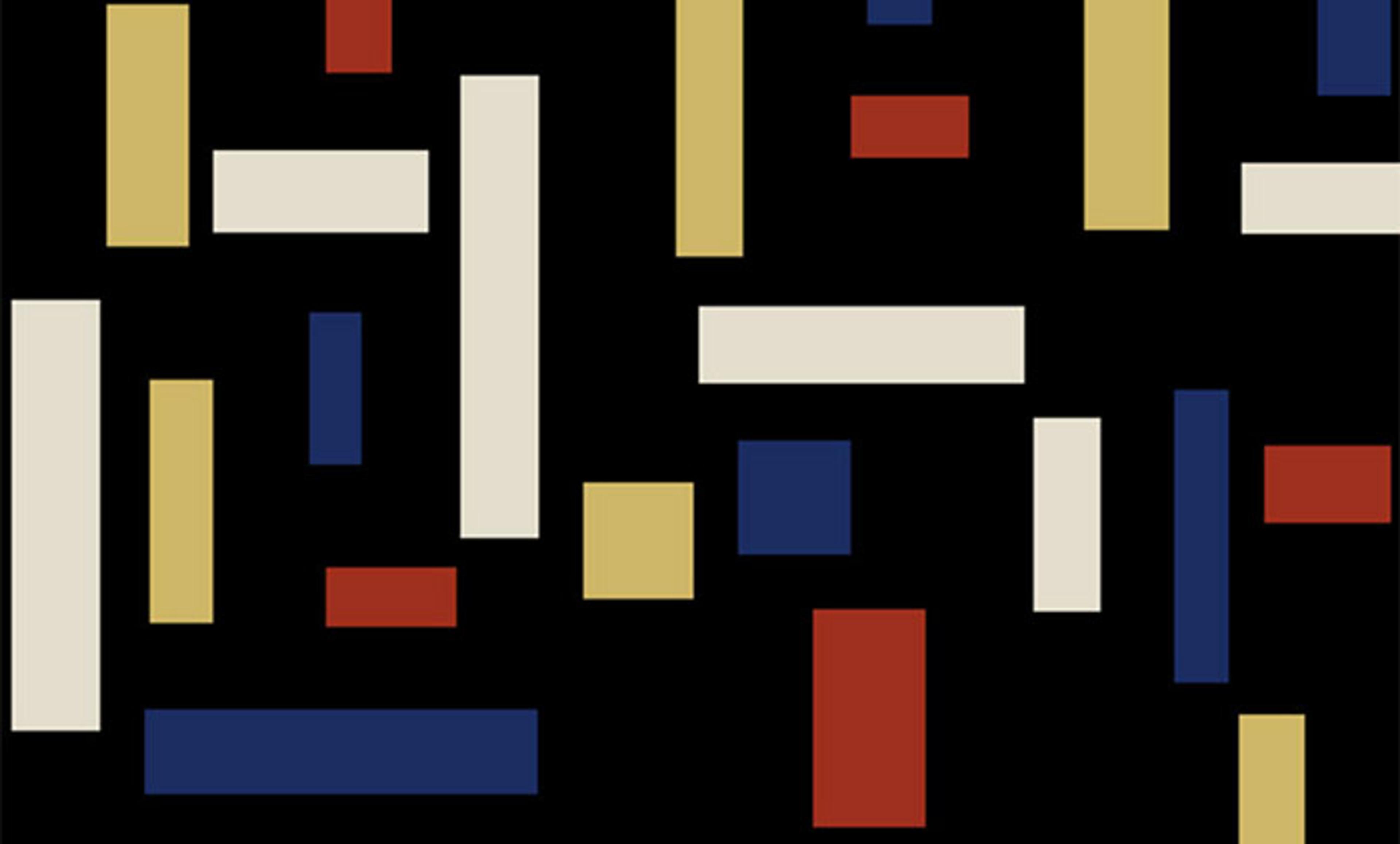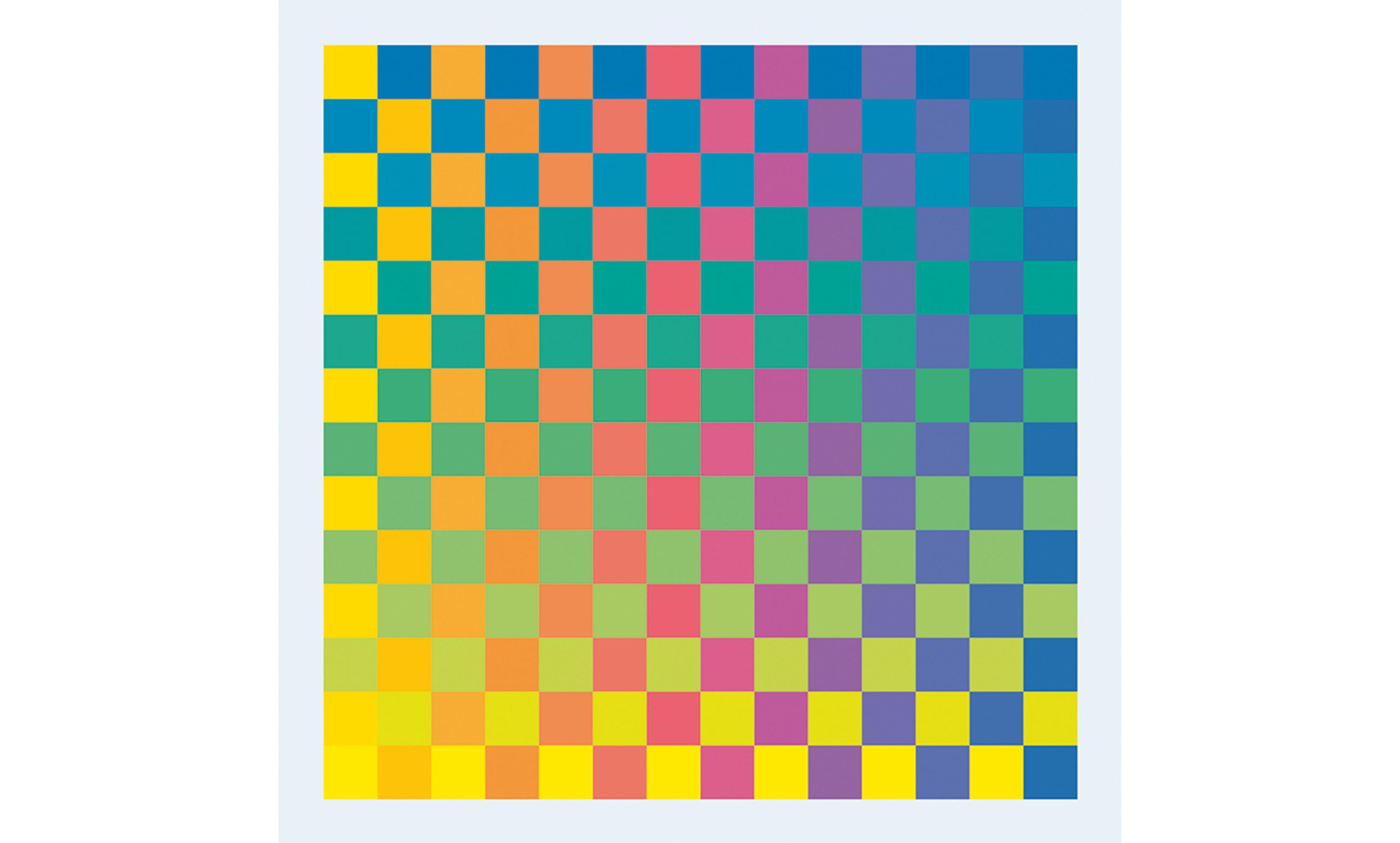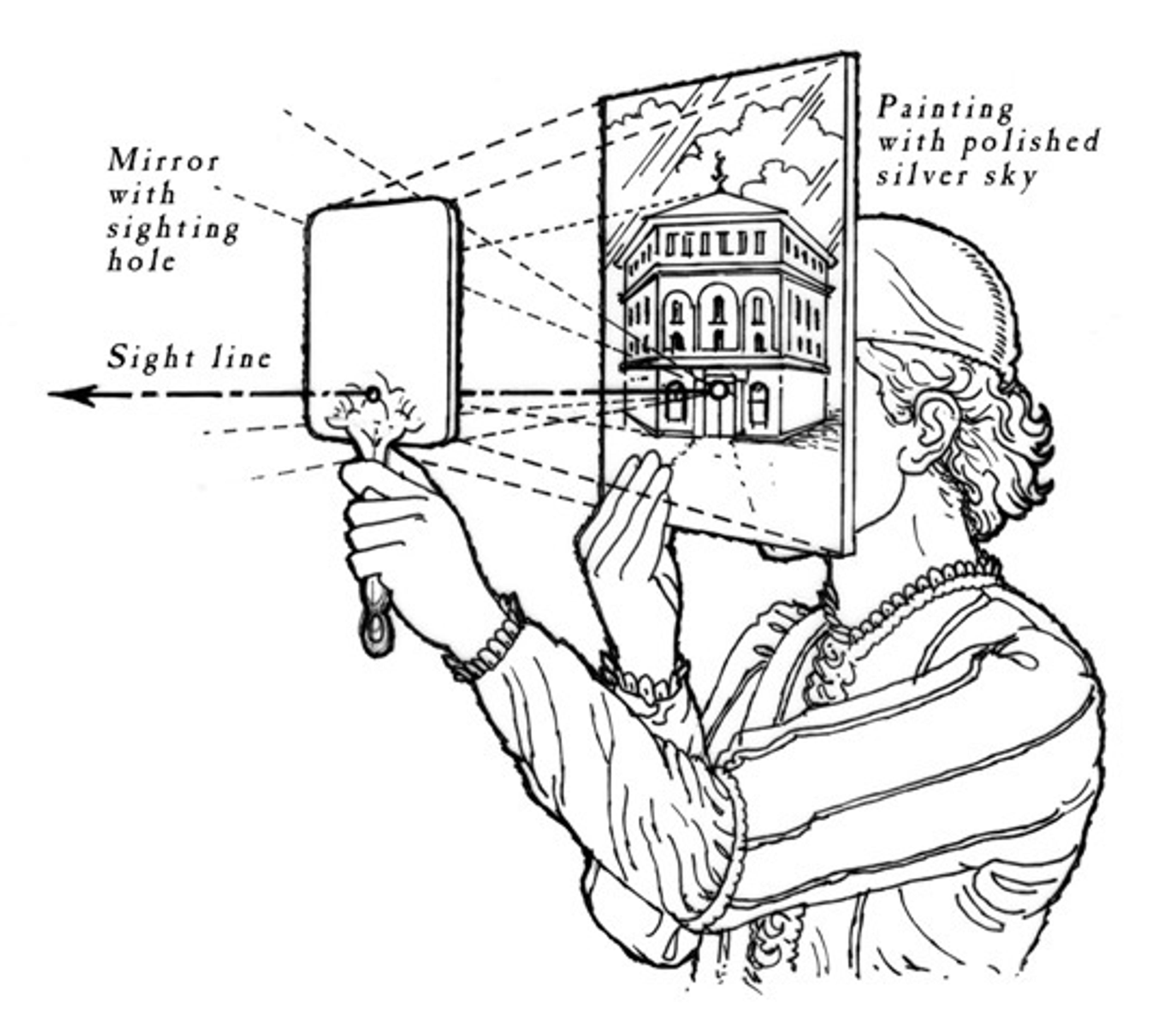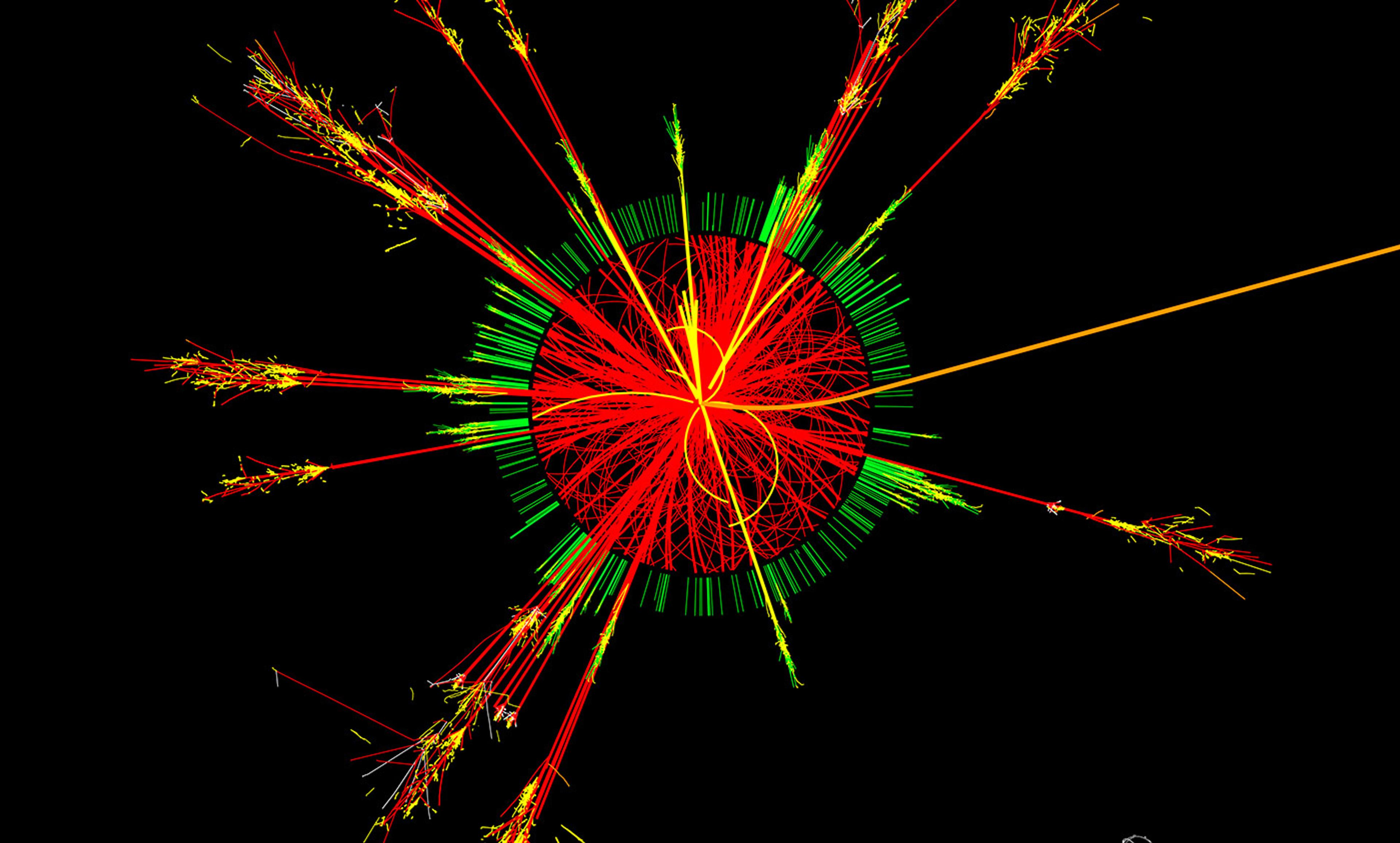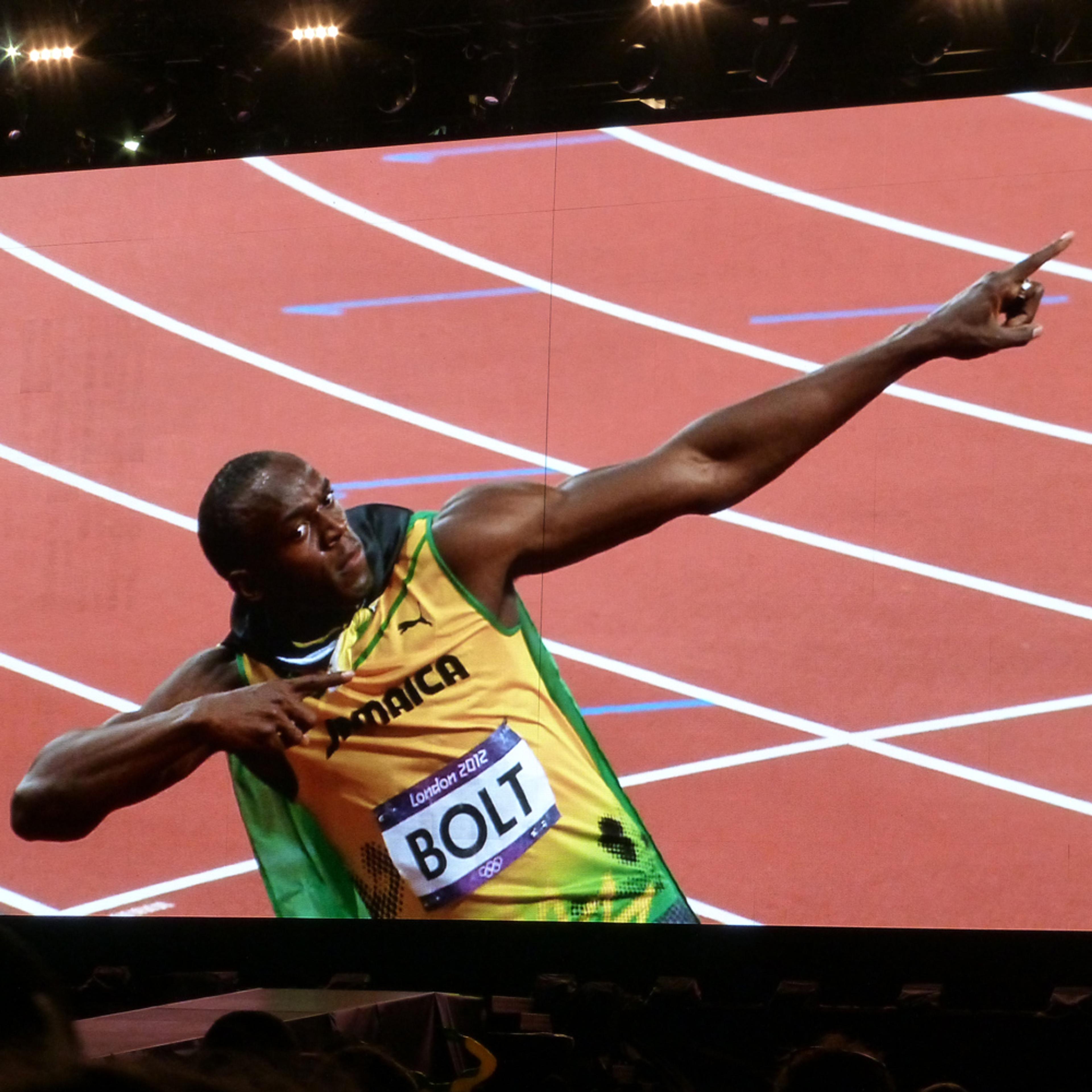Detail from Composition VII (The Three Graces) (1917), by Theo van Doesburg. Photo courtesy Wikipedia
A hypothetical alien visitor, sent to observe all of human culture – art and architecture, music and medicine, storytelling and science – would quickly conclude that we as a species are obsessed with patterns. The formal gardens of 18th-century England, the folk tales of medieval Germany and the traditional woven fabrics of Mayan civilisation have little in common, but they each owe their aesthetic appeal to being composed of smaller, identical parts arranged into a harmonious whole.
It’s no coincidence that our Universe is naturally full of symmetry. The mirror symmetry of a stately home reflects the external form of many creatures, from butterflies to humans. At a deeper level, the very laws of the Universe are a consequence of its symmetries. An easy-to-state but profound example in the groundbreaking work of the German mathematician Emmy Noether is that the conservation laws that are ubiquitous in physics are in fact manifestations of the symmetries of the Universe. Energy is conserved, for instance, because the laws of physics are the same now as they were a millennium ago; momentum is conserved because they are the same here as they are on Pluto. Symmetry thus has the unusual distinction that it is fundamental both to the way the world works and to the extent to which we are capable of understanding it.
Symmetry is at the core of my own work as a materials physicist. When atoms aggregate to make a material, they naturally arrange themselves into symmetrically repeating patterns. More than this, when we want the resulting material to be useful for a particular purpose – say, if we’re designing a touch sensor or an element of computer memory – these patterns must have the right symmetry to produce these useful properties.
There is a further twist. In both art and science, perfectly symmetrical patterns can be monotonous. Indeed, there’s a sense in which symmetry is the opposite of information. If I showed you one wing of a butterfly, you could easily sketch the other; if I showed you a single paling, you could draw the entire picket fence. Since the missing pieces can so easily be reconstructed, they carry no new information.
If, by contrast, we want to represent or store new information, it follows that we need to find ways to break the symmetry in order to encode our data. If successive palings in the picket fence differed in some way – say, if each were painted either white or blue at random – then the symmetry (and your ability to draw the whole fence) would be lost. Replace white palings with zeroes and blue palings with ones, and we have a binary representation of a number, the basis of digital data storage and manipulation.
In a physical computer, these ones and zeroes are represented not by white and blue palings but by electrically or magnetically polarised materials. A polarised material is no longer isotropic (that is, the same in every direction), but instead has an electric or magnetic field pointing in a particular direction. It’s therefore a physical example of broken symmetry.
This might seem like a technical and obscure point, but in fact symmetry-breaking is as fundamental to the Universe, and to our view of it, as symmetry itself. Water is a uniform soup of molecules, where any particular point is on average the same as any other; but when it freezes into ice, it solidifies into a fixed pattern, in which different places are distinguishable. The difference is the same as between a painted wall and one covered in wallpaper. On the painted surface, every point is identical, but on the papered one, each point is the same as only a few others: the corresponding points in adjacent copies of the pattern. We therefore say that some of a particular kind of symmetry has been lost, something known as translational symmetry – where, for a given movement from one point to another, the object is the same.
At the cosmological scale, the differences between the fundamental forces that govern the Universe, including gravity and electromagnetism, are believed to be the result of symmetry breaking in a mathematically analogous way. The search for a ‘Theory of Everything’ that would explain the effects of these forces together is, in a profound sense, an attempt to look at ice and imagine water: to understand the symmetrical soup of the early Universe by looking back at it from the broken, patterned version that prevails today.
The concept of symmetry-breaking is not just an intrinsically beautiful idea; it is of substantial practical use. Returning to materials science, it turns out that the symmetry required to produce a particular functionality is almost always the right kind of broken symmetry. Consider the phenomenon of piezoelectricity, which underlies ‘smart footpaths’ that can harvest the energy from people’s footsteps. Piezoelectricity involves a material that responds to pressure by generating an electric field (or vice versa). It was first noted in 1880 by the brothers Pierre and Jacques Curie: work less well known than Pierre and Marie Curie’s Nobel Prize-winning investigations of radioactivity, but equally groundbreaking. Piezoelectric materials are now used in everyday applications including clocks, cameras and printers, as well as being the basis for more futuristic technologies.
It turns out that a material cannot be piezoelectric if it’s too symmetrical at the atomic level. Think about compressing a rubber cube with a ballbearing at its exact centre: all of the material around it might shift inwards, but the ball would stay in the same spot. A small amount of initial asymmetry, though, can be magnified when pressure is applied. If the ballbearing is off-centre to start with, squashing the cube inwards might shift it further from the middle – a movement that, applied by analogy to piezoelectricity, can generate an electrical field. The same argument holds for a host of other material properties that depend on electrical or magnetic ordering, or both: to produce these unusual effects, a certain amount of asymmetry is necessary.
How, in practice, do we achieve such asymmetry by design? There are two basic prerequisites. First, we must ensure that the symmetry we want to break is inherently unstable. Consider a ping-pong ball atop a Mexican sombrero. It is most symmetrical balancing right in the middle, but this position is very unstable. The ball will roll down into the brim in one direction or another, spontaneously breaking the symmetry.
A real material, though, consists of billions upon billions of atomic ‘hats’; if the ball rolls in a different direction in each, there will be no overall effect. The second prerequisite, therefore, is that each hat – each atomic component – should strongly influence its neighbours. If each component distorts in the same direction as those nearby, then the broken symmetry will be carried through from the atomic to the macroscopic scale. Given these requirements, designing a material with just the right kinds of symmetry demands real ingenuity, combining insights from chemistry, physics and materials science.
We can also be cunning in how to achieve a low-symmetry state. One recent line of research, including in my own work, is to approach the problem indirectly. Rather than setting out to achieve, say, electrical polarisation in a single step, we can combine two different sorts of symmetry-breaking. Under the right circumstances, the combination can result in a polar ordering at the atomic scale even if neither of the ingredients would have done so individually – a behaviour known as hybrid improper ferroelectricity.
Like materials design, the act of telling stories is about breaking patterns. In fairy tales, we’re likely to come across three bears, three pigs or three sons; in modern times, an enduring joke-pattern involves three protagonists (think ‘an Englishman, an Irishman and a Scotsman walk into a bar’) while comedians, improvisers and scriptwriters speak of the ‘rule of three’. Why this obsession with the number three? The answer is simple: the first time, something happens; the second time, something similar happens, establishing a pattern; but the third time, something different happens, breaking the pattern. The first two of the king’s sons come to a sticky end, while the third slays the dragon, marries the princess, and lives happily ever after. There is nothing magical about the number three, but since a pattern has to have at least two elements, a series of three is the most efficient way of establishing a kind of symmetry in order to disrupt it.
At a certain level of abstraction, in both science and art, symmetry-breaking creates the conceptual space for interesting things to happen. Patterns might be appealing but, from ancient sagas to modern technology, they are at their most interesting, useful and revealing when broken.
This Idea was made possible through the support of a grant from Templeton Religion Trust to Aeon. The opinions expressed in this publication are those of the author(s) and do not necessarily reflect the views of Templeton Religion Trust.
Funders to Aeon Magazine are not involved in editorial decision-making, including commissioning or content approval.
